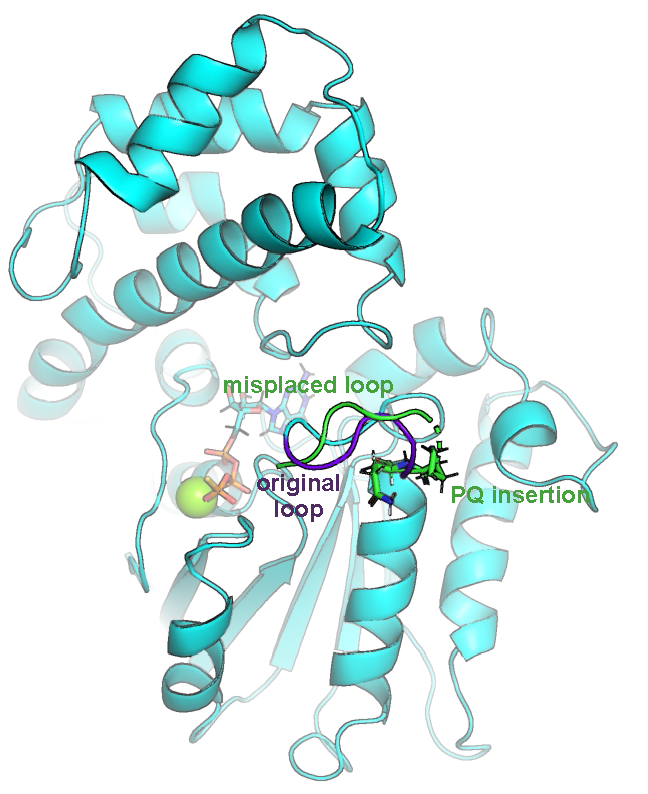A screening system to find effective drugs for encephalopathies
Pediatric encephalopathies are rare, but severe diseases that still lack treatments. The mutations involved in this disease often occur in a family of proteins involved in transmitting signals from outside a cell to its inside, called G proteins. As more than sixty different mutations can lead to pediatric encephalopathies, the development of new therapeutic options is a real challenge.
A tiny change in the G protein Gαo with huge consequences
Many mutations leading to pediatric encephalopathies affect the gene coding for the most common subunit of the G protein in the brain, Gαo. One of them consists of the addition of two extra amino acids (in green in the Figure below) that change the configuration of a loop of Gαo. This small modification has huge consequences for patients, leading to severe motor dysfunction.

The addition of two extra amino acids (in green) changes the configuration of a loop of Gαo and provokes severe motor dysfunction in patients. © Adapted from Figure 4 in Koval et al. 2023.
A new screening system to search an effective drug
In their recent paper published in Med, researchers from the laboratory of Prof. Vladimir Katanaev have investigated in depth the molecular changes induced by this specific mutation and their consequence for protein functions. Based on the abnormalities they observed, they were able to develop and validate a new high-throughput screening platform aiming at identifying molecules that could restore the normal function of Gαo.
What’s next?
With their new screening system, the scientists now plan to screen hundreds of compounds in the search for a drug to treat patients with this specific mutation. Their research will also provide valuable insights into the role of the Gαo protein in brain development and function.
31 Mar 2023
